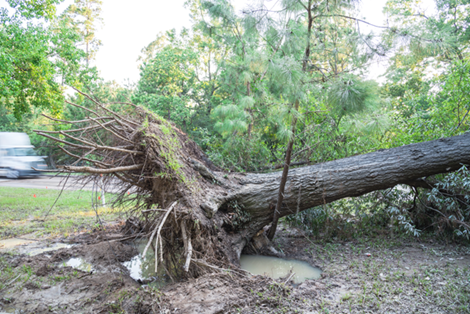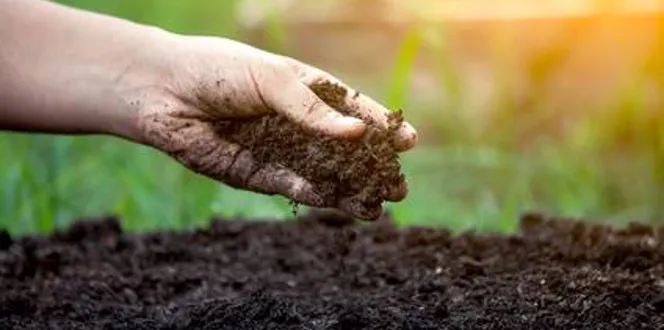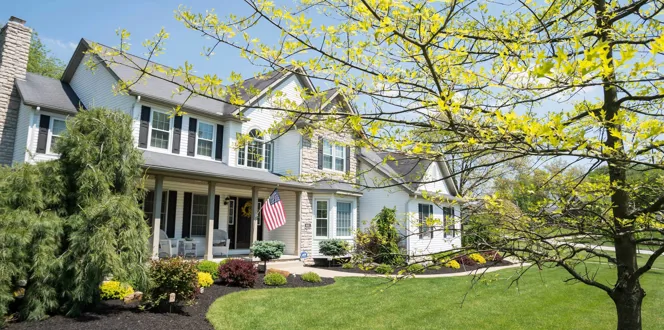From watching the sun filter through a green, dancing canopy in summer to enjoying the falling cascade of auburn, gold, and brown leaves in autumn, trees bring a lot of joy to you in your yard.
So it’s never a great feeling when storms come through and uproot your precious trees as well as the memories and moments they provide.
Whether it’s hurricane-force winds, thunderstorms with heavy rains and gusts, or winter storms that bring heavyweight on trees in the form of snow and ice accumulation, sometimes trees split, lose a branch, or completely uproot.
Since trees take a while to grow and provide the shade, look, or privacy you crave, it’s never easy to lose one. Let’s look at the reasons for uprooted trees and what options you have to help save them.
Why Are Trees Uprooted During a Storm?
When gusting winds and severe storms uproot a tree, you might wonder why some trees uproot and others don’t.
The depth and strength of the tree’s roots, the strength of the tree’s wood, and its crown shape can all impact trees’ susceptibility to uprooting or breaking.
Here are some reasons for uprooted trees:
- Soil disruption from home development nearby
- Root damage
- Wood decay
- Poor structure
- Shallow soil or soil that doesn’t match the tree’s preferred growing conditions
- Trees growing in an environment that’s recently changed (in the last 5 to 10 years), such as those that lose the physical protection of surrounding trees that kept them from bending and breaking.
- Compacted soil and gradation changes
- Drainage issues/Saturated soils
- Windthrow magnitude, which is the force that wind applies to the tree roots and trunk.
Can An Uprooted Tree Be Saved?
Whether or not you can save an uprooted tree depends on the size of the tree and the condition it’s in.
For instance, if a very large tree has been uprooted, it’s less likely to be salvaged. This is because the sheer size of the tree and massive root structure may require heavy equipment to lift. Something of that size most likely won’t remain stable enough to promote anchoring type roots even if you were able to get it back up and secured into the soil. Large trees have extensive root systems that anchor the weight of the tree’s trunk and branches. Uprooting damages this root system, and the remaining roots are likely not sufficient to anchor the tree or draw in the water or nutrients it needs.
You may, however, be able to right (or replant) a smaller tree after such an event since it wouldn't have such a massive root structure, particularly if most of the roots remain unexposed in the soil. Cover the exposed roots right away to keep them from drying out. Then dig out the soil beneath the exposed root mass, cut off any protruding shattered roots, and return the tree to its vertical position. Pack the soil around the exposed roots and give it adequate water. Prune any broken branches, being sure not to remove any more than necessary. Wait until the tree has established new growth before adding fertilizer or pruning again.
How Long Can An Uprooted Tree Live?

A tree’s life after uprooting depends on the weather.
During a hot, dry summer, an uprooted tree can die within just a day or two. If the uprooted tree is deciduous and has shed its leaves, it can last longer.
But if the uprooted tree didn’t suffer severe damage, has few exposed roots, is small enough to replant correctly, and receives adequate water, it may survive.
Can An Uprooted Tree be Replanted?
Replanting an uprooted tree must be done with care to avoid further root and branch damage. You want to be able to just lift it back to its original position without twisting and turning it and risking further root damage.
Transplant shock is a possibility, but if the tree suffered minimal damage and receives the right care, it is possible it can make it through.
A lot depends on the type of tree that’s been uprooted. For instance, with an uprooted palm tree, you won’t know if the palm will recover for six months or more when you can see new leaves emerging from the bud.
To answer the question, “Can an uprooted palm tree be replanted?” you have to look at the state of the palm.
If a storm has broken your palm at the trunk and it was a single-stem species, then unfortunately your only option is to cut the tree at the base and remove it.
For palms that fell at the root, stand an uprooted palm tree upright as soon as possible and replant it at the same depth at which it was planted previously. Brace it for at least six months to ensure it re-roots itself in the soil.
Can a Partially Uprooted Tree Be Saved?
If your tree has 50% or more of its root system intact and it’s less than 10 feet tall, it may be possible to save it.
Carefully pull the tree back to an upright position, cover any exposed roots with soil, water it, and stake the tree for extra support.
Unfortunately, trees taller than 10 feet tall are harder to save, regardless of whether it’s a partial or full uprooting.
Uprooted Tree Removal
Handling an uprooted tree is potentially hazardous work. Not only are you dealing with heavy branches, but you also could be dealing with utility, sewer, and water lines. Don’t attempt uprooted tree removal without the right skills and equipment. A professional arborist can help you remove an uprooted tree without you having to deal with increased safety risks.
You can salvage some uprooted trees if they aren’t too large. Having a professional arborist look at your tree’s condition can help you determine your options. They can also look at your current trees and prune branches only as needed, removing excess weight and making sure they are stable if storms are on their way. This can increase your trees’ chances of standing strong through high winds.







